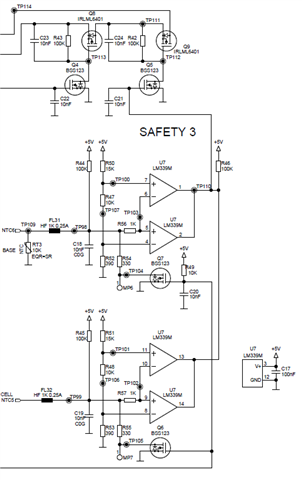Hi all
My customer has implemented a window comparator circuit as illustrated in the below schematic with the LM339.
Under normal operation the output of U7 is high. If a fault condition occurs the output of U7 is pulled low.
For one PCB they find the output of U7 is stuck low regardless of the input, replacing the IC fixes the problem.
Do you see anything wrong with this circuit ?
Do you see a problem with e.g. C21 10nF capacitor at the output of U7 ?
Best regards
Ueli




